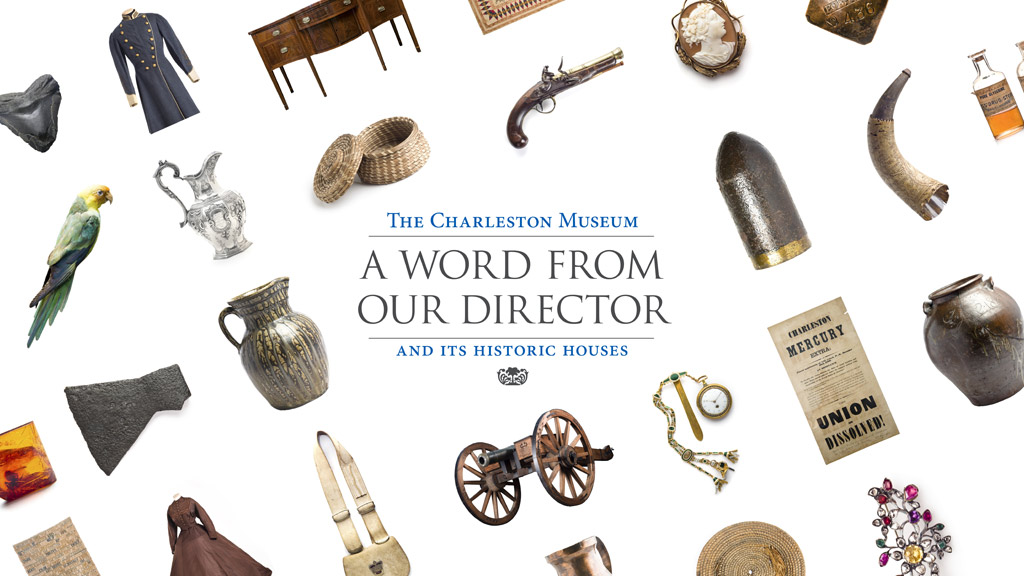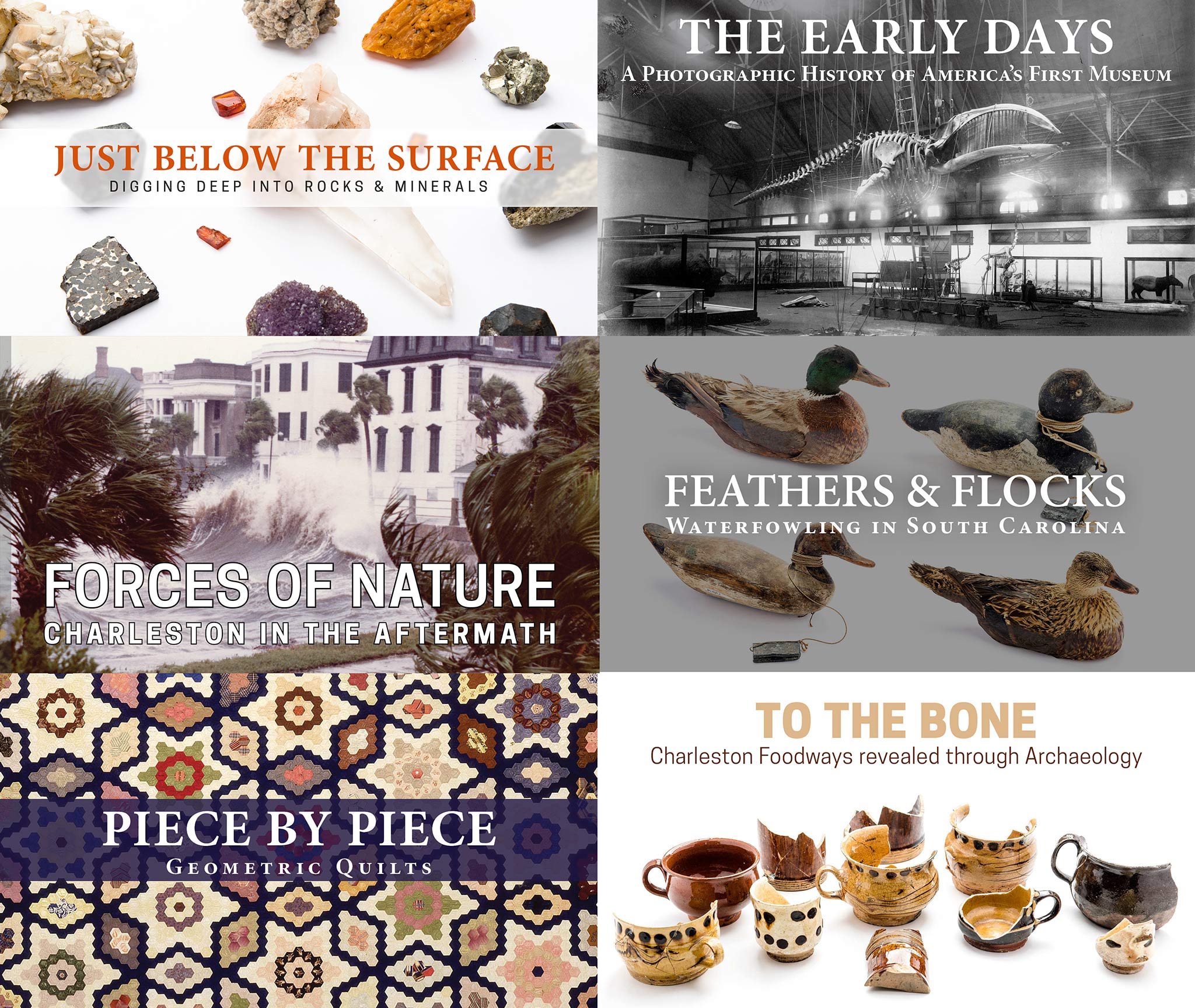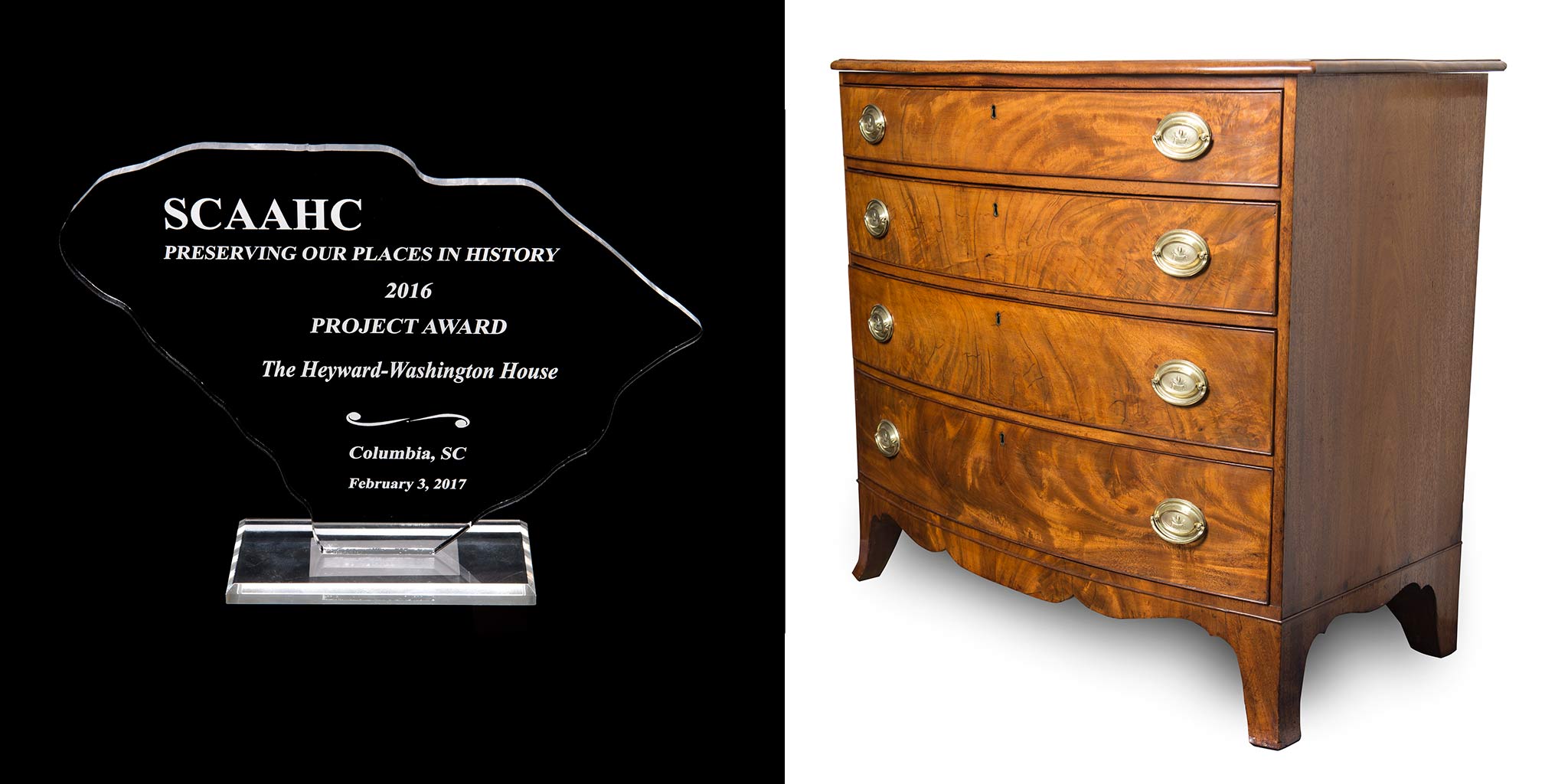A Word from our Director, Carl Borick
Happy New Year to all of our Museum friends! Although we are looking forward to good things in 2018, this past year was one of amazing accomplishments for The Charleston Museum.
Certainly our most notable achievement of 2017 was the completion of our new Bunting Natural History Gallery. Named for longtime Museum benefactor Ethel-Jane Bunting and a crucial objective of our most recent Strategic Plan, the gallery now provides a cohesive overview of Lowcountry natural history, using an outstanding selection of fossils, casts, animal mounts, geologic examples and other materials from the collections. It has definitely stirred the reaction among our guests that we had hoped, particularly the school groups. We strongly believe the gallery presentation will inspire the next generation of young Museum goers and be a highly satisfying experience for those long familiar with the Museum. Thanks, once again, to all who supported this project financially.
Curator of Natural History Matthew Gibson was a driving force behind the gallery, developing the initial floor plan, researching and writing the narrative and artifact panels, and selecting and preparing artifacts for display. An active paleontology lab was incorporated into the exhibits, and you can frequently find Matt working there. If not, you can leave him a question in the lab mailbox, and he will respond to it via social media. This is a great way to make the gallery even more interactive.
Although a significant number of curatorial and exhibits staff were involved in the gallery renovation, they still were able to field seven special exhibits during 2017. These included Forces of Nature: Charleston in the Aftermath and The Early Days: A Photographic History of America’s First Museum in the Lowcountry Image Gallery, Piece by Piece, a two-part quilt exhibit in the Historic Textiles Gallery, and Just Below the Surface: Digging Deep into Rocks and Minerals, To the Bone: Charleston Foodways Revealed through Archaeology, and Feathers and Flocks: Waterfowling in South Carolina in the Lobby Gallery. The Early Days, To the Bone, and the geometric quilts portion of Piece by Piece will be on display into the new year, so come check them out.
The Bunting Natural History Gallery was not the only significant change to take place at the Museum in the past twelve months. We made a number of needed improvements related to visitor services in the lobby. Thanks to facility funding from Charleston County and the City of Charleston, the lobby restrooms were completely renovated and our visitor reception area was moved to the center of the lobby with a new state-of-the-art visitor services desk. These improvements now make for a much more welcoming space for our guests.
In terms of collections, the Museum is continually making efforts to improve upon its ability to educate the public about Lowcountry history and regularly takes in new objects appropriate to its mission. In 2017, we accessioned 128 objects into the collection from 20 donors (you can see an enumeration of these donated objects here). We are most grateful to the individuals and families who have helped to strengthen the Museum’s collections in making these gifts. Among the highlights are an 1840s silver teapot, photographs of the old Museum building on Rutledge Avenue from the early 20th century, and letters of Mildred Stewart from her time as a nurse at Stark Hospital, a U.S. Army medical facility located in Charleston during the Second World War.
In other collections news, conservation work was completed on the 18th century Eliza Lucas Pinckney sack back gown, one of the most significant pieces in the historic textiles collection. We are so grateful to the Eliza Lucas Pinckney Chapter of the National Society Daughters of the American Revolution for raising the funds to accomplish this critical project.
At the historic houses, we were honored to receive the South Carolina African American Heritage Commission’s 2017 Preserving Our Places in History project award for our updated interpretation in the Heyward-Washington House kitchen building. The new exhibit in the kitchen building gives guests the opportunity to delve more deeply into the lives of the enslaved people who worked and resided at the Heyward property. The E. Milby Burton Trust for Historic Houses, meanwhile, which has supported projects at the Museum’s historic houses for nearly four decades, purchased for exhibition at the Joseph Manigault House a chest of drawers made in Robert Walker’s Charleston shop in the early 19th century. The piece is particularly unique, however, because it is signed by Boston, a free African American craftsmen, who was employed by Walker. Both of these enhancements allow Museum staff to better interpret African American history at the historic houses, a key objective in the Museum’s most recent Strategic Plan.
In other collaborations, the Museum’s Archaeology Department again partnered with the College of Charleston on the biannual Field School, which gives students taking the course beneficial fieldwork experience. In addition to Hampton Plantation, the team worked in the rear yard of the Historic Charleston Foundation’s Aiken-Rhett House in hopes of finding evidence of the Revolutionary War siege lines. The site was selected based on period maps and reports from ground penetrating radar work that the Foundation had earlier sponsored which seemed to indicate that the British third parallel ran through the area. Led by the Museum’s Martha Zierden, Curator of Historical Archaeology, Ron Anthony, Archaeologist, and Dr. Barbara Borg of the College, the students found a deep trench which contained a misshapen musket ball, which had clearly hit something when fired. Coupled with a grapeshot found by Zierden at a previous dig at the Aiken-Rhett house in the 1990s, the trench and musket ball provide fairly clear archaeological evidence of the presence of the British siege line. We are hopeful that further research will be done at the site in the coming years.
Our Education Department had another productive year. In addition to the numerous school group visits to the Museum, every 4th grader from Charleston County School District (a few charter schools excepted), visited the Heyward-Washington House as part of the “Rebels and Redcoats” programs, offered in collaboration with the Old Exchange and Provost Dungeon and the Powder Magazine. Education Department staff have also been involved with significant outreach to local Title I schools. Each week during the school year, a Museum educator visits a Title I school to present a special program for the students. In spring 2017, Ryn Hester and Jessica Runyon visited Angel Oak and Mary Ford Elementary Schools and in the fall this program was offered to Memminger Elementary School. Their work is just one of many examples of The Charleston Museum’s value to our community.
We could not accomplish any of the wonderful things that we do without an active and supportive Board of Trustees, a conscientious and dedicated staff and generous supporters such as you. We look forward to great things in 2018 and seeing you at the Museum.






